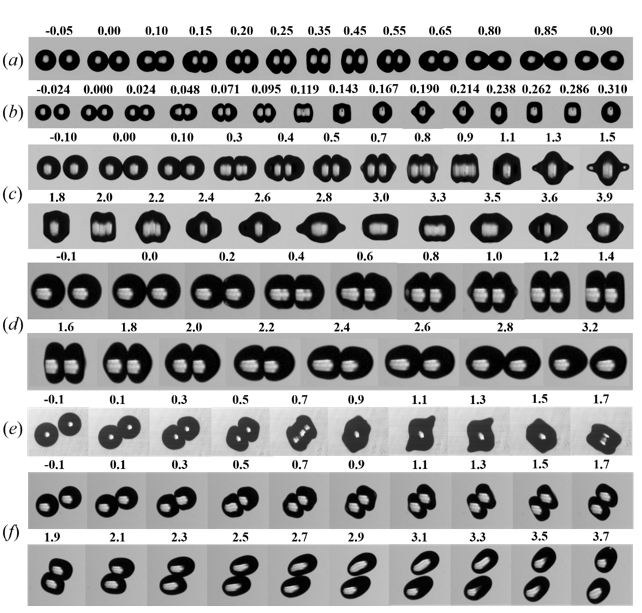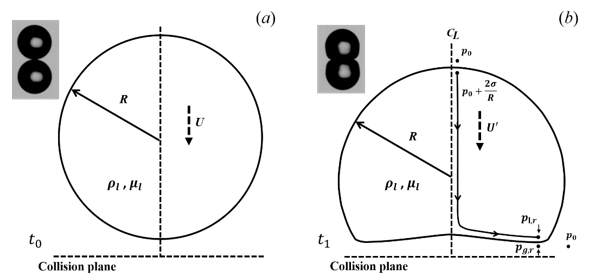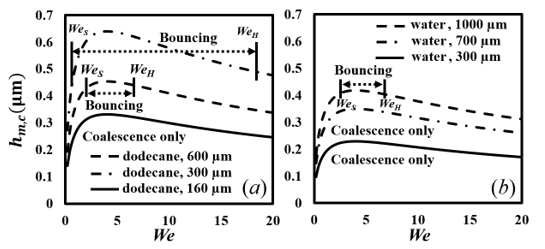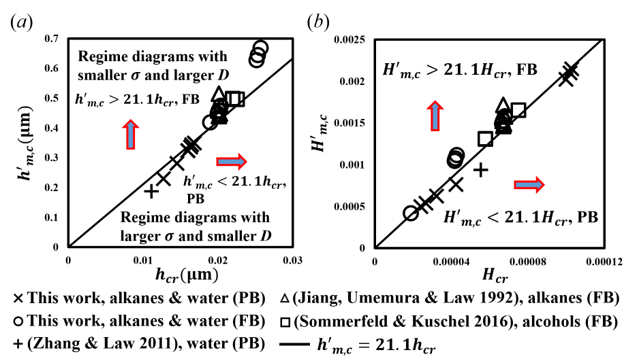In droplet impacts, transitions between coalescence and bouncing are determined by complex interplays of multiple mechanisms dominating at various length scales. Here we investigate the mechanisms and governing parameters comprehensively by experiments and scaling analyses, providing a unified framework for understanding and predicting the outcomes when using different fluids. Specifically, while bouncing had not been observed in head-on collisions of water drops in atmospheric conditions, it was found in our experiments to appear by increasing the droplet diameter sufficiently. Contrarily, while bouncing was always observed in head-on impacts of alkane drops, we found it to disappear by decreasing the diameter sufficiently. The variations are related to gas draining dynamics in the inter-droplet film and suggest an easier means for controlling bouncing as compared to alternating the ambient pressure usually sought. The scaling analysis further shows that for a given Weber number, enlarging droplet diameter or fluid viscosities, or lowering surface tension contributes to a larger characteristic minimum thickness of the gas film, thus enhancing bouncing. The key dimensionless group (  ) is identified, referred to the two-phase Ohnesorge number, Ohnesorge number of liquid, and the Hamaker constant, respectively. Our thickness-based model indicates that as
) is identified, referred to the two-phase Ohnesorge number, Ohnesorge number of liquid, and the Hamaker constant, respectively. Our thickness-based model indicates that as  > 21.1
> 21.1  , where
, where  is the maximum value of the characteristic minimum film thickness (
is the maximum value of the characteristic minimum film thickness (  ) and
) and  the critical thickness, bouncing occurs in both head-on and off-centre collisions. That is, when
the critical thickness, bouncing occurs in both head-on and off-centre collisions. That is, when  , a fully-developed bouncing regime occurs, thereby yielding a lower coalescence efficiency. The transitional Weber number is found universally to be 4. (機械系潘國隆教授提供)
, a fully-developed bouncing regime occurs, thereby yielding a lower coalescence efficiency. The transitional Weber number is found universally to be 4. (機械系潘國隆教授提供)

FIG. 1. Collision sequences of dodecane drops with (a) D = 300 μm at We = 4.60, B = 0, (b) D = 160 μm at We = 4.70, B = 0, and of water drops with (c) D = 700 μm at We = 4.73, B = 0, (d) D = 1000 μm at We = 4.74, B = 0, (e) D = 700 μm at We = 4.68, B = 0.33 and (f) D = 1000 μm at We = 4.77, B = 0.32. Time unit: ms.

FIG. 2. Schematic of a drop impacting a solid surface or another drop at the stage (a) before impact and (b) with a slight deformation.

FIG. 3. Characteristic minimum thickness of the gas film as a function of We in (3.9) for (a) dodecane and (b) water drops, where the experimentally obtained WeS and WeH are indicated.

FIG. 4. Graphs for predicting the occurrence of partially-developed and fully-developed bouncing regimes at fixed dimensionless groups (  ) with (a) dimensional thickness (
) with (a) dimensional thickness (  ) and (b) dimensionless thickness
) and (b) dimensionless thickness  ). Here
). Here  and
and  .
.